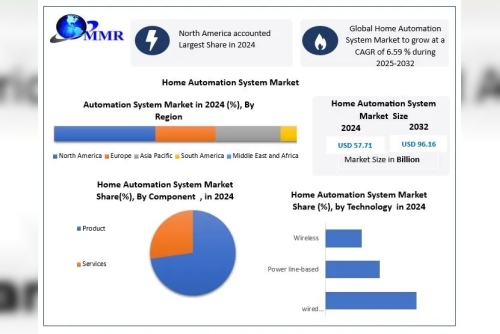India, with its rich agricultural history, has always been reliant on innovations to boost productivity and efficiency. In the current landscape, tractors, harvesters, seed drills, and small farm machinery play a crucial role in the modernization of Indian farming. This article delves into the importance of the Indo Farm Tractor, the Happy Seeder, harvesters, and other essential farming equipment like seed drills and cultivators, while also exploring the significance of cash crops and their cultivation.
Indo Farm Tractor: Revolutionizing Agricultural Productivity
The Indo Farm Tractor is a highly regarded name in the Indian tractor industry, known for its versatility and reliability. These tractors are designed to handle the challenges of Indian farming, such as diverse terrains and climatic conditions. Indo Farm Tractors offers a wide range of models, each equipped with modern technology, robust engines, and superior hydraulics to meet the demands of both small and large-scale farmers.
Some of the key features of Indo Farm Tractors include:
Fuel Efficiency: The engines are designed to consume less fuel, making them cost-effective for long hours of farming.
Durability: Built to withstand tough environments, Indo Farm Tractors are suitable for rugged terrains and intensive operations.
Advanced Technology: With features like power steering and efficient gearboxes, these tractors are user-friendly, reducing the physical strain on farmers.
Indo Farm Tractors are not just limited to plowing or tilling; they can also be used with other attachments such as seed drills, harvesters, and happy seeders, making them a versatile solution for various farming activities.
The Happy Seeder: A Game-Changer for Sustainable Farming
The Happy Seeder is a unique piece of agricultural machinery that has transformed the way farmers manage crop residues. Traditionally, after harvesting crops like rice and wheat, farmers used to burn the leftover straw, which contributed significantly to air pollution and soil degradation. The Happy Seeder solves this problem by allowing farmers to sow seeds directly into the soil without removing or burning the previous crop residue.
Some of the benefits of the Happy Seeder include:
Environmental Conservation: By eliminating the need to burn stubble, the Happy Seeder helps reduce air pollution and greenhouse gas emissions.
Improved Soil Health: The machine leaves the residue on the soil surface, which acts as a mulch, improving soil moisture retention and enhancing microbial activity.
Cost Savings: Farmers save on labor and fuel costs by not having to remove the stubble, making the Happy Seeder an economical choice.
The Happy Seeder is compatible with tractors and has become an essential tool in promoting sustainable farming practices, particularly in states like Punjab and Haryana, where stubble burning has been a major environmental concern.
Harvesters: Boosting Efficiency and Productivity
Harvesting is one of the most labor-intensive activities in farming. Traditionally, manual labor was used to harvest crops, which was time-consuming and costly. However, the advent of harvesters has revolutionized the process by making it faster and more efficient.
There are different types of harvesters, such as:
Combine Harvesters: These machines perform multiple functions like reaping, threshing, and winnowing, making them highly efficient for large-scale farming.
Sugarcane Harvesters: Specifically designed for sugarcane farming, these harvesters help in cutting, chopping, and loading the cane in a single operation.
The use of harvesters not only saves time but also reduces labor costs, making farming more profitable for Indian farmers. Moreover, modern harvesters are equipped with sensors and GPS technology to ensure precision and minimize crop losses during harvesting.
Seed Drills: Precision in Sowing
The seed drill is another important piece of small farm machinery that has transformed the sowing process. Seed drills ensure that seeds are planted at the correct depth and spacing, which is critical for optimal plant growth. Traditionally, seeds were sown manually, often resulting in uneven distribution and poor crop yields.
With a seed drill, farmers can achieve:
Uniform Seed Distribution: This ensures that each plant has adequate space and nutrients, leading to better crop yields.
Water Conservation: By planting seeds at the correct depth, seed drills reduce water wastage as the seeds receive the right amount of moisture.
Time Efficiency: The machine drastically cuts down the time required for sowing, allowing farmers to cover more land in less time.
Seed drills are often attached to tractors like Indo Farm Tractors, making the sowing process seamless and highly efficient.
Tractor Cultivators: Enhancing Soil Preparation
The tractor cultivator is an essential implement used to prepare the soil for planting by breaking up the soil and uprooting weeds. Cultivators are attached to tractors and are commonly used in various stages of farming, from tilling to preparing seedbeds.
Benefits of using tractor cultivators include:
Soil Aeration: Cultivators break up the soil, allowing air, water, and nutrients to penetrate deeper into the soil, which is essential for healthy plant growth.
Weed Control: Cultivators help in uprooting weeds, reducing the need for chemical herbicides.
Improved Crop Yields: By ensuring that the soil is well-prepared, cultivators contribute to better crop yields.
In small and large farms alike, tractor cultivators have become indispensable tools for efficient farming practices.
Small Farm Machinery: Empowering Small-Scale Farmers
India is home to millions of small-scale farmers who operate on less than two hectares of land. For these farmers, large-scale machinery like harvesters and heavy-duty tractors may not be economically viable. This is where small farm machinery comes into play.
Small farm Machinery equipment such as mini-tractors, hand-held seeders, and small harvesters are designed to cater to the needs of small-scale farmers. These machines are cost-effective, easy to operate, and help in mechanizing tasks like sowing, harvesting, and tilling, thereby increasing productivity.
Cash Crops in India: A Key Driver of Agricultural Economy
Cash crops in India are crops grown primarily for sale rather than consumption by the farmer. In India, cash crops like cotton, sugarcane, tea, coffee, and spices play a significant role in the agricultural economy. These crops contribute to both domestic trade and exports, providing a stable income source for farmers.
Key factors driving cash crop cultivation in India include:
Favorable Climate: India’s diverse climatic zones allow for the cultivation of various cash crops throughout the year.
Government Support: Schemes like the Minimum Support Price (MSP) help farmers get fair prices for their produce.
Technological Advancements: The use of machinery like tractors, harvesters, and seed drills has improved the efficiency and yield of cash crops.
Conclusion
The use of Indo Farm Tractors, Happy Seeders, harvesters, seed drills, and other small farm machinery has been instrumental in transforming Indian agriculture. These innovations have not only increased productivity but also made farming more sustainable and profitable. Coupled with the growing importance of cash crops, modern machinery is helping Indian farmers meet the challenges of today’s agricultural landscape, ensuring food security and economic stability for the nation.












